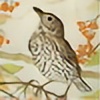HOME | DD
 RooCat — Yellow Prickly Pear Flower
RooCat — Yellow Prickly Pear Flower

Published: 2009-07-04 00:51:37 +0000 UTC; Views: 716; Favourites: 16; Downloads: 0
Redirect to original
Description
ENGLEMANN'S PRICKLY PEAROpuntia engelmannii
This is one of the prettiest true yellow ones I've found.
Desert: Sonoran and Chihuahuan
Height: Up to 5 feet
Pads: Blue-green, 12-inch circular or oblong
Flowers: Yellow to peach with age
Fruit: Large, juicy, reddish purple
Elevation: 1,500-6,200 feet
Prickly pear cactus represent about a dozen species of the Opuntia genus (Family Cactaceae) in the North American deserts. All have flat, fleshy pads that look like large leaves. The pads are actually modified branches or stems that serve several functions -- water storage, photosynthesis and flower production.
Like other cactus, most prickly pears have large spines -- actually modified leaves -- growing from tubercles -- small, wart-like projections -- on their stems. Members of the Opuntia genus are unique because of their clusters of fine, tiny, barbed spines called glochids. Found just above the cluster of regular spines, glochids are yellow or red in color and detach easily from the pads. Glochids are often difficult to see and more difficult to remove, once lodged in the skin.
The fruits of most prickly pears are edible and often made into candy or jam. Prickly pear branches (the pads) are also cooked and eaten as a vegetable. Because of the glochids, great care is required when harvesting or preparing prickly pear cactus. Both fruits and pads of the prickly pear cactus are rich in slowly absorbed soluble fibers that may help keep blood sugar stable.
Prickly pear cactus are found in all of the deserts of the American Southwest, with different species having adapted to different locale and elevation ranges. Most require course, well-drained soil in dry, rocky flats or slopes. Some prefer mountain pinyon/juniper forests, while others require steep, rocky slopes in mountain foothills.
Most prickly pear cactus have yellow, orange, red or purple flowers, even among the same species. They vary in height from less than a foot (Plains, Hedgehog, Tuberous) to 6 or 7 feet (Texas, Santa Rita, Pancake). Pads can vary in width, length, shape and color. The Beavertail, Santa Rita and Blind Pear are regarded as spineless, but all have glochids.
There has been medical interest in the Prickly Pear plant. Some studies have shown that the pectin contained in the Prickly Pear pulp lowers levels of "bad" cholesterol while leaving "good" cholesterol levels unchanged. Another study found that the fibrous pectin in the fruit may lowers diabetics' need for insulin. Both fruits and pads of the prickly pear cactus are rich in slowly absorbed soluble fibers that help keep blood sugar stable. The pads cut in half length-wise are good at drawing out infections and soothing insect bites and stings.
Cropped, ©. and Framed.
Full View Please For Details!
Related content
Comments: 14


👍: 0 ⏩: 0


What? You and your weather buddies didn't like my Mare's Tail Cirrus Clouds?
👍: 0 ⏩: 1



👍: 0 ⏩: 1

We had the smaller prickly pears in Albuquerque.
👍: 0 ⏩: 1

Hard to say which species but it could have been any of these: TUBEROUS PRICKLY PEAR, Opuntia macrorhiza, PLAINS PRICKLY PEAR, Opuntia polycantha, HEDGEHOG PRICKLY PEAR/PORCUPINE PRICKLY PEAR, Opuntia erinacea, or BROWN-SPINDED PRICKLY PEAR, Opuntia phaeacantha
👍: 0 ⏩: 0

Why is it "true yellow"
Have you ever tasted its fruit? I'm just wondering what it might taste like.
A very pretty flower.
👍: 0 ⏩: 1

Many cacti species have "tints" to them, cholla and prickly pear being among them. Most prickly pear "yellow" flowers are really peachish, orangish or golden vs. yellow.


👍: 0 ⏩: 0



















